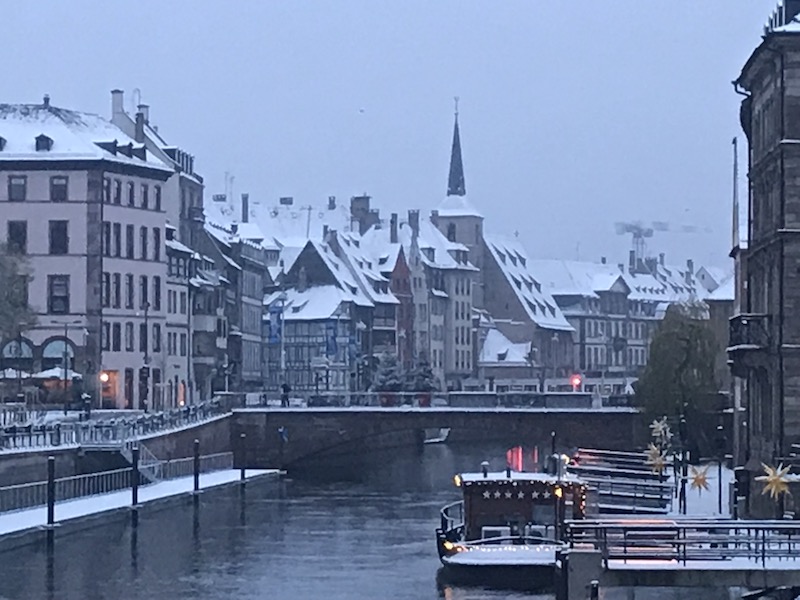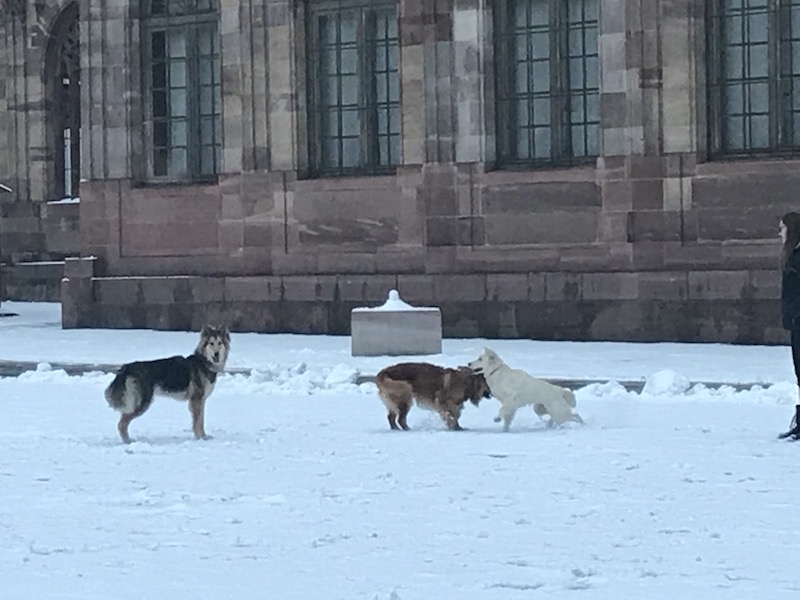Our Blog - Strasbourg, France
The city has many bridges, including the medieval Ponts Couverts (literally, covered bridges). It is a set of three bridges and four towers that make up a 13th century city defensive system. The three bridges cross the four river channels of the River Ill that flow through the historic Petite France district. Construction of the Ponts Couverts lasted from 1230 to 1250. At that time, each bridge was covered by a wooden roof that protected the defenders who would have been stationed on them in time of war. After Barrage Vauban was built (that you will see later) in 1690, they were no longer used for defense and were just bridges at that point. The roofs were removed in 1784 but the name remained.

The town itself has some great architecture, like these half-timbered houses along the river and sprinkled throughout the old town (some lie in the shadow of the Cathedral)



Our guide talked to us about this one, explaining how in general, the half-timbered houses were built by poor people since what was put between the wood was straw or stones or whatever they had handy. But in some cases, you would have a bit more money and wanted to show it off, and so you would add carvings. In that way, you would distinguish yourself from the others and "show off" that you were better off than your neighbors.



And this is just a great picture (I thought) of the river with the setting sun.
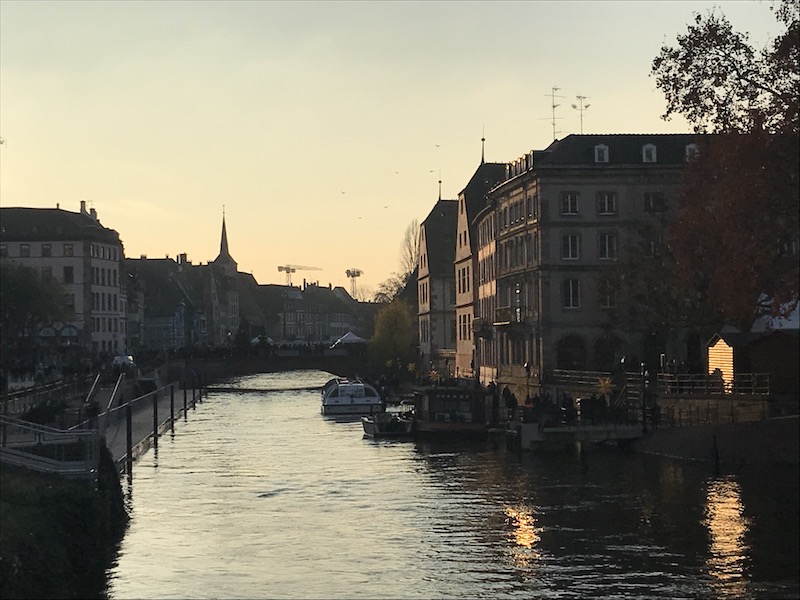
For our first dinner, we did very "traditional" Alsatian food for our meals. The first was Bibeleskäs, which is a specialty of the Alsace region, and was a bit interesting. As you can see, there is a slice of ham along with a little wedge of cheese, and a pot of fromage blanc (literally 'white cheese', which is a little like sour cream but not quite as sour). It is served with chopped parsley, garlic, onion, and chives that you mix into the fromage blanc (however much or little you want). Then you can see the dish of potatoes on the side, which you dip into the cheese mixture. The other dish we had was choucroute garnie, which is cooked cabbage (like sauerkraut but not as sour as we normally get in the US) along with steamed potatoes and then various meats (sausages, ham hocks, pork shoulders, back bacon or slices of salt pork).

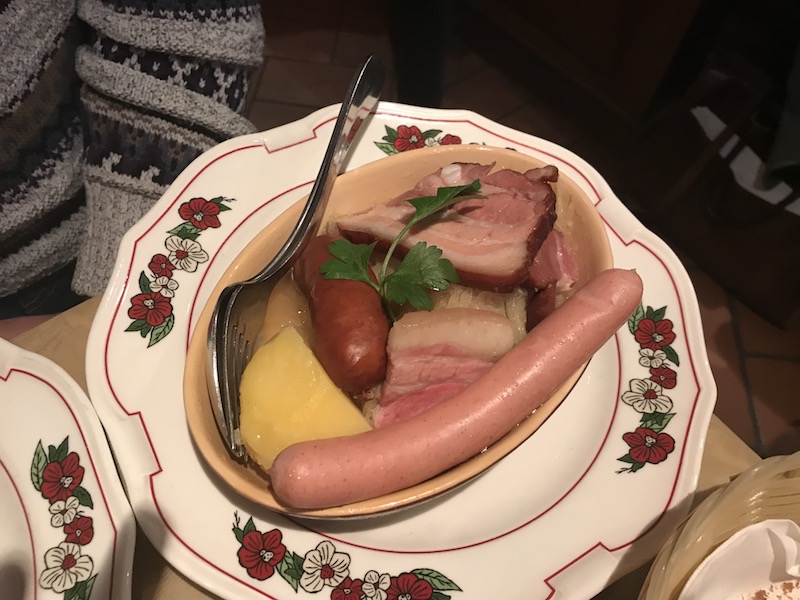
The apartment that we rented for the trip was right next door to the Palais Rohan.It was built in the 1730s and is a masterpiece in Baroque architecture. It gets the name from being the former residence of the House of Rohan, an ancient French noble family originally from Brittany. After the French Revolution, it was confiscated and became the Town Hall (Hôtel de Ville) from 1791 to 1805 when it was "presented" to Napoleon. Here you can see the river side (not the main entrance) with the flag at half-mast due to the attack that occurred on Tuesday, December 11th.

Then the main entrance, which is in a more Baroque style than the rest of the palace, is wide and curved. The central gate is framed by two pairs of columns and juts out in the shape of a Triumphal arch. The upper part of the front section is crowned with statues representing allegories of faith such as "Religion" and "Eucharist", and personifications of Christian virtues such as "Mercy" and "Penance"



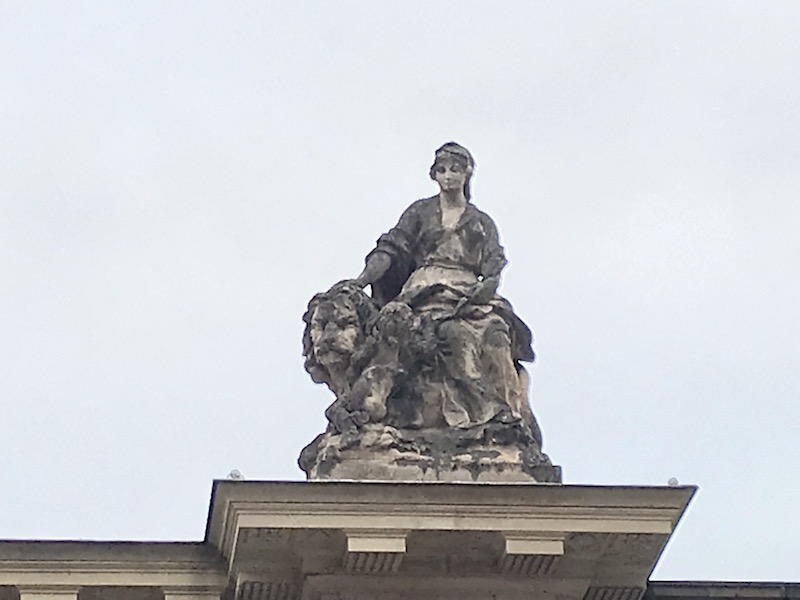
In the courtyard was a manger setup for the "Living Creche", which I have a couple pictures and videos later of in the "Christmas Market" section of the blog.

There are several museums, and we decided to go through the apartments part of the palace. First up, Synod Hall. The decorative themes of this hall (which looks like it used to be 2 rooms), are seen around the decorative items, showing hunting, fishing, wine, water, and music. At one time, it was used as a dining room, and on one wall of this dining room were basins with decorative motifs in a theme of water (done around 1740). There is a niche with a grisaille painting depicting Ceres, goddess of the harvest. Interesting trivia for this painting .. it was covered during the Imperial period when the dining room was changed into a chapel and was rediscovered during restoration work in 1989.



Next is the Salle des Évêques, or Bishops' Room. In the 18th century, this was the King's antechamber and was used as a game room. The corner pieces in the ceiling show the monogram of Armand Gaston de Rohan (AR). The wood panelling was done in 1738 and includes the coats of arms of various Prince-Bishops of Strasbourg. During the time that the palace was the Hotel de Ville, the paintings were changed to show civic virtues.


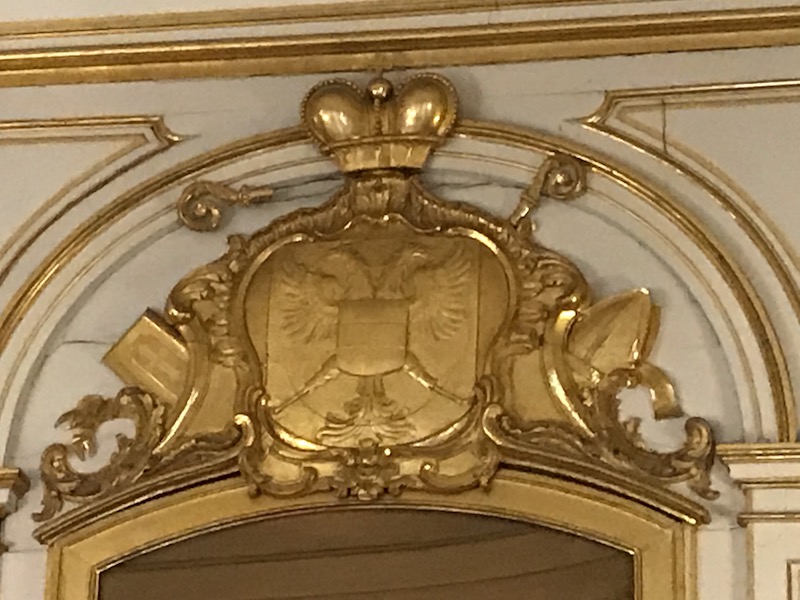
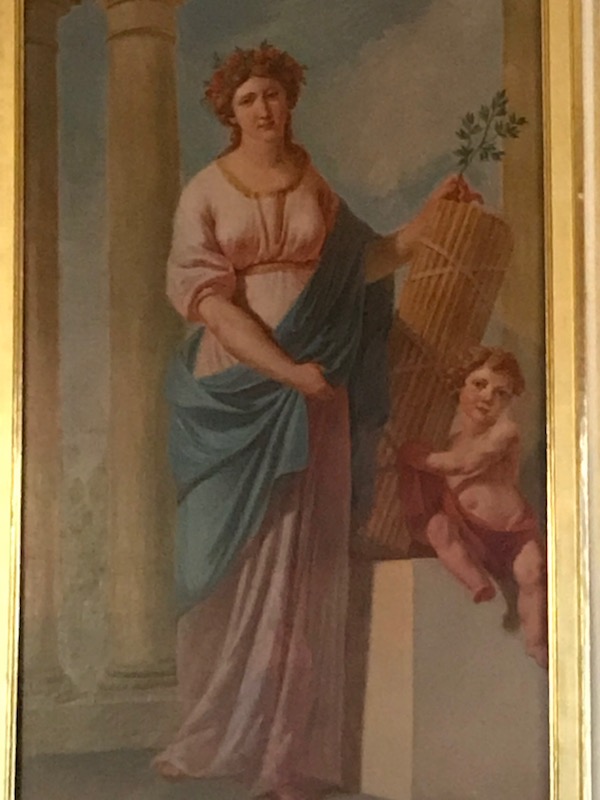
King's bedchamber has wood panelling that is an amazing example of French rocaille style, completed in 1740. There have been a few noted occupants of this room, including King Louis XV in 1744 and Marie Antoinette in 1770. The tapestries were completed in Paris in 1625 and depict the history of Constantine the Great.




Another room, which has changed from an antechamber to a small dining room throughout the years. The decoration has been redone since it was damaged in 1944 by bombings. The main things here are: the cabinet (right side) which is a Louis XIVth Parisian-style cabinet from 1675, a blue-and-white porcelain pagoda (back-right) from the Qing dynasty in China, and a pyramid-shaped ceramic stove (middle back) that was constructed in 1771 at a factory in Strasbourg.




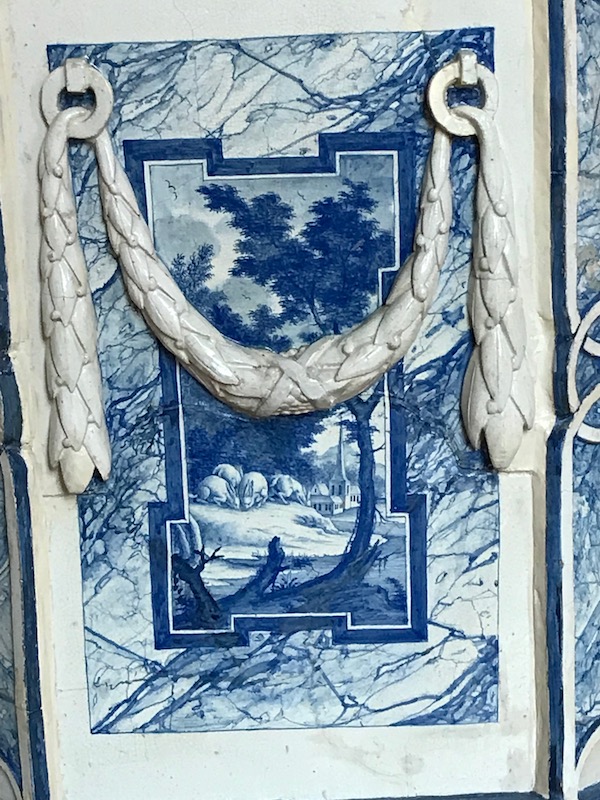
In the 18th century, this small room was a study but became the bedchamber of Emperor Napoleon 1st in 1805.
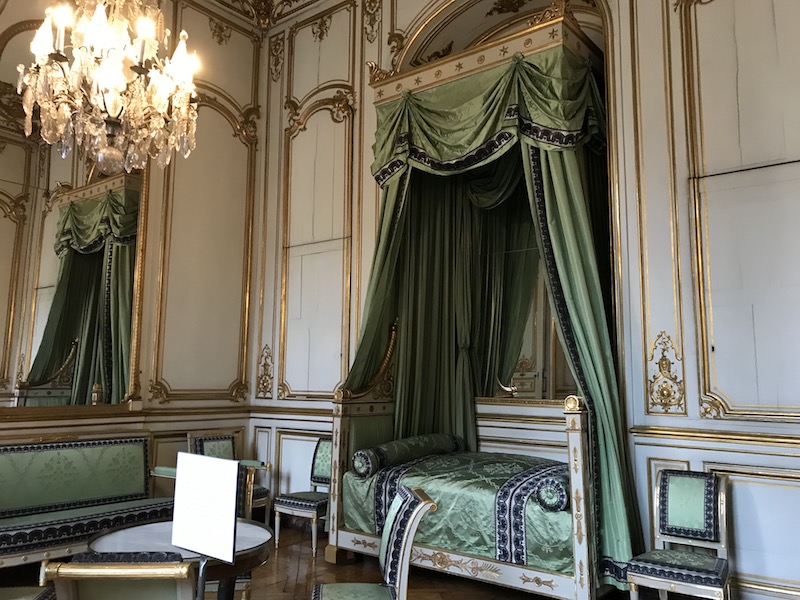
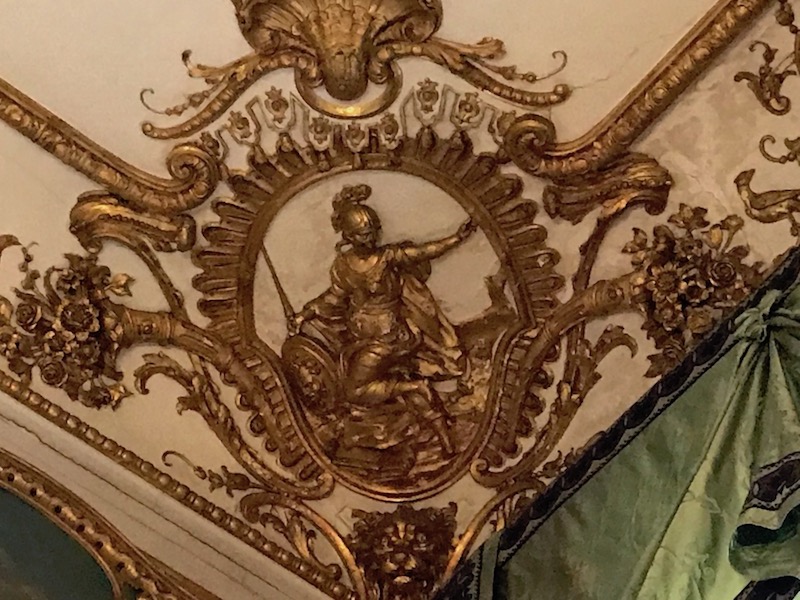
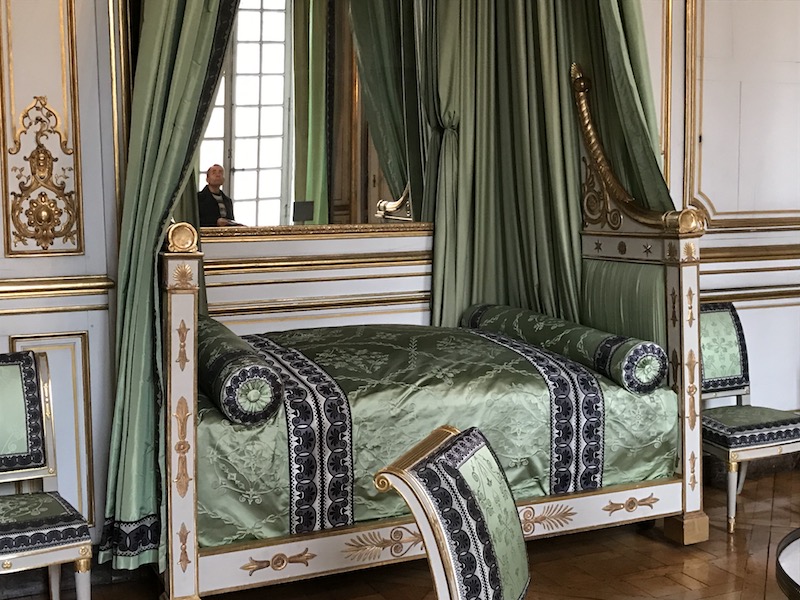
Second dinner, and you can see another choucroute garnie, but with slightly different meats. Each restaurant will generally have a slightly different variation on what meats and sausages are included. Then the other dish was a very typical sausage with a warm mustard-based potato salad (growing up, we called it german potato salad).


After a fire in 1800 that destroyed a previous opera house, a plan was put in place to build a new one. However, the Napoleonic Empire came and went and the plans for the opera were altered several times. Finally, in 1821, this Neoclassical building with a monumental façade was opened. There are sandstone statues of six muses (three muses were left out: Clio, Thalia and Urania) along the top.
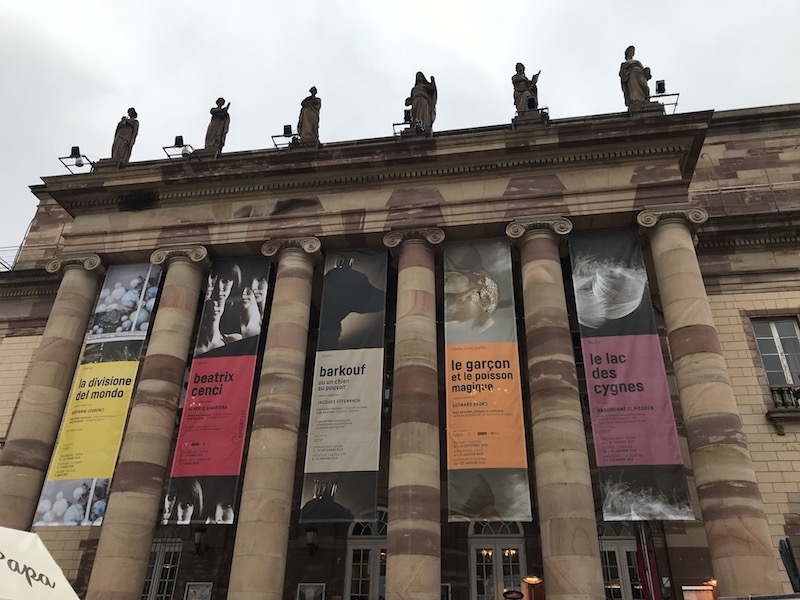
Then we headed over to the "German" district and stoped at Place de la République. This shows the difference in the architecture from the older historic section and this new district. Fronting the Place de la République is the Palais du Rhin (formerly the Imperial Palace called the Kaiserpalast), which is a Prussian-style Neo-Renaissance palace built during the 1880s. Remember I mentioned that Strasbourg switched nationalities quite often. After the Franco-Prussian war when Strasbourg became German, they needed an official residence for the Kaiser. They decided to build a new palace that would be symbolic of the imperial power. It took 5 years to finish and was inaugurated by William II in August 1889. However, it wasn't the full-time residence of the emperor, who only made 12 visits between 1889 and 1914. It then became a military hospital and then a government office. During WWII, the Nazis used it as the "Kommandantur" or headquarters from 1940 until it was recaptured by the French General Leclerc in 1945.
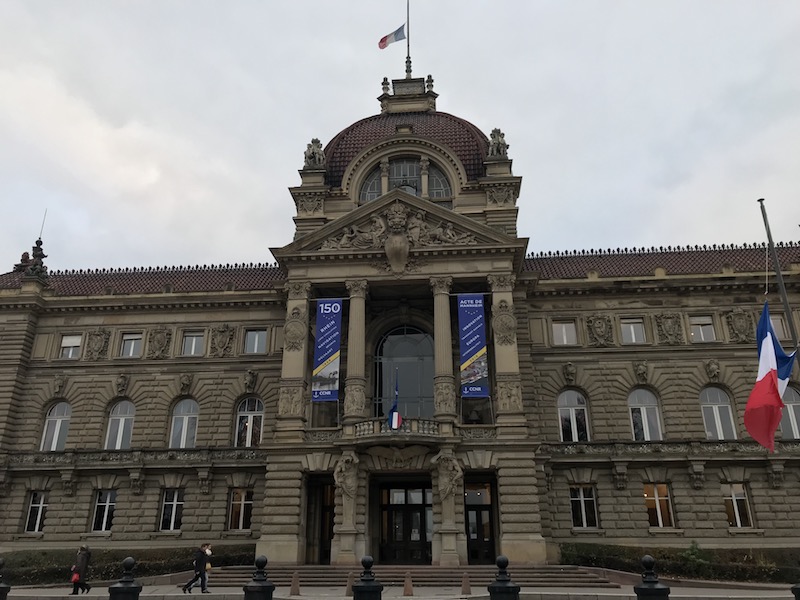


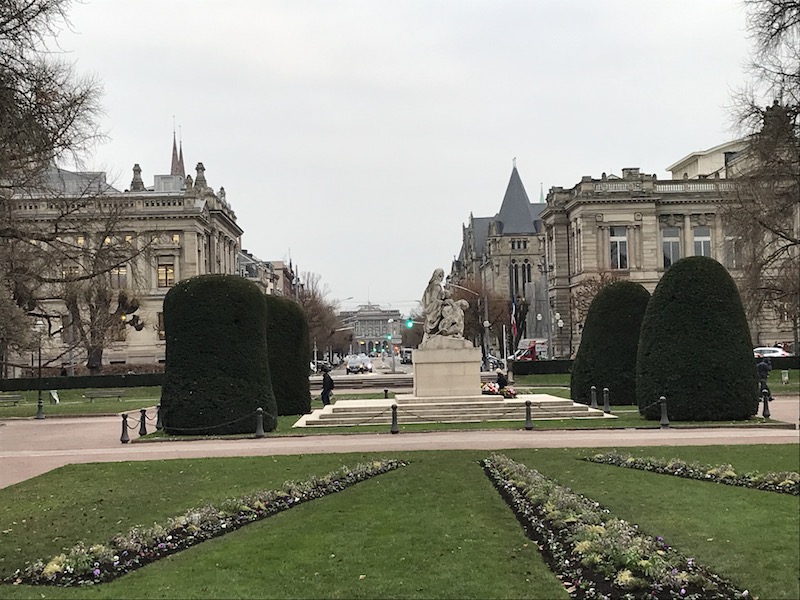
Our guide specifically mentioned this "Monument to the Dead", erected in 1936, as it is very different from most of them in France. Most of them have statues of soldiers in uniform and mention that they died for their country. This one is different, it bears as the only inscription "To our dead" without mentioning the homeland for which the soldiers died. At this point, it was only for those who died during WWI (1914-1918) but family members ended up fighting on both sides, so it was more fitting to have them not symbolize a country. To honor these dead, the sculpture did a Pietà representing a mother (symbolizing the city of Strasbourg) holding on her knees her two dying children. One is German and the other French, but no longer wearing uniforms to distinguish them. They fought each other, and in the face of death they come together, they give each other their hands.
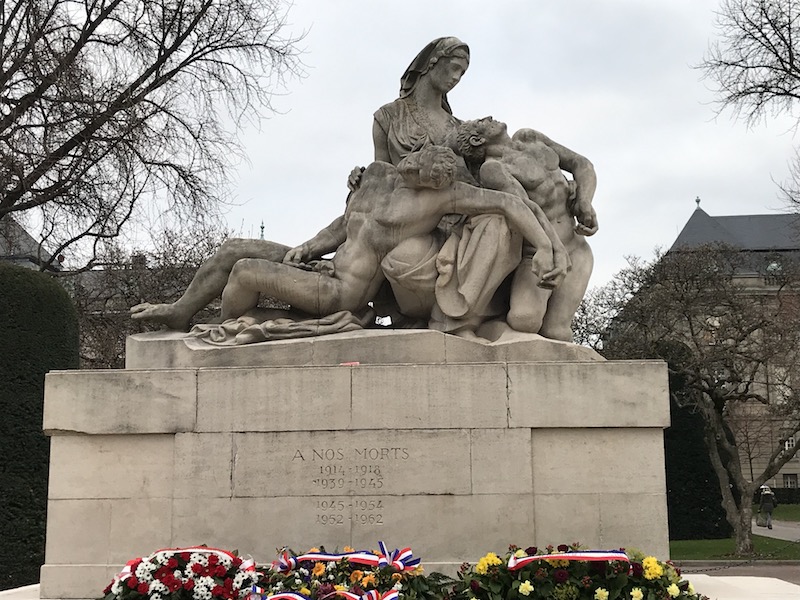
I mentioned before that Strasbourg was called Argentoratum in the Roman period. The Fountain of Janus was created in 1988 to mark the 2000th anniversary of Argentoratum/Strasbourg with the aqueduct recalling the Roman origins of the city. Janus, the famous Roman god with two faces, symbolizes the dual identity of the city (Franco-German) with one face looks to the historic center and the other to the newer part of the city.
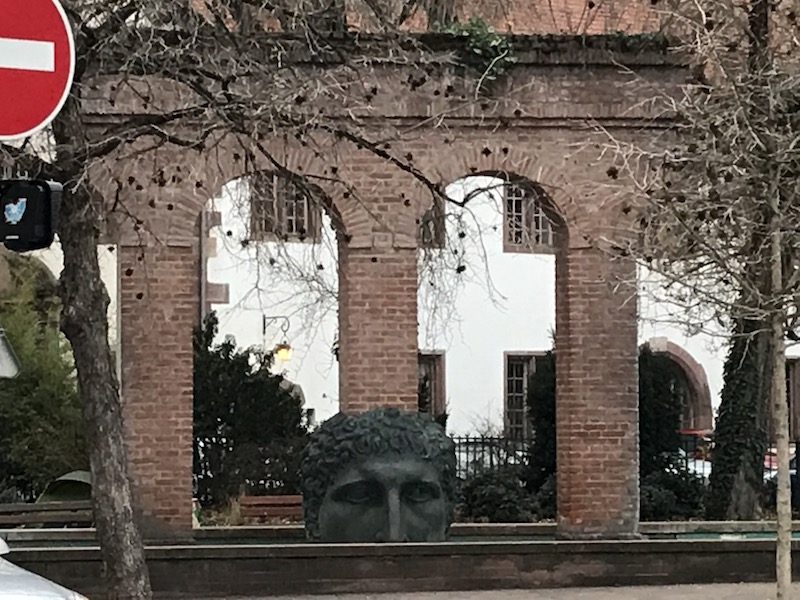
The Cathedral of Strasbourg was started in 1176 but since it was not completed until 1439, you can see several different styles. The original choir and north transept were built in Romanesque style but then by 1225, Gothic was the style of the time and so part of the nave (which had been started in Romanesque) were torn down and rebuilt.




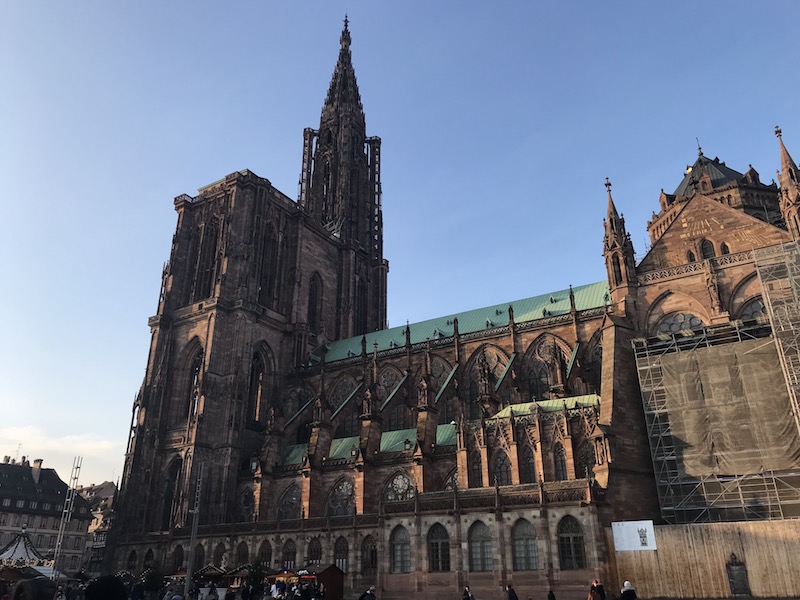

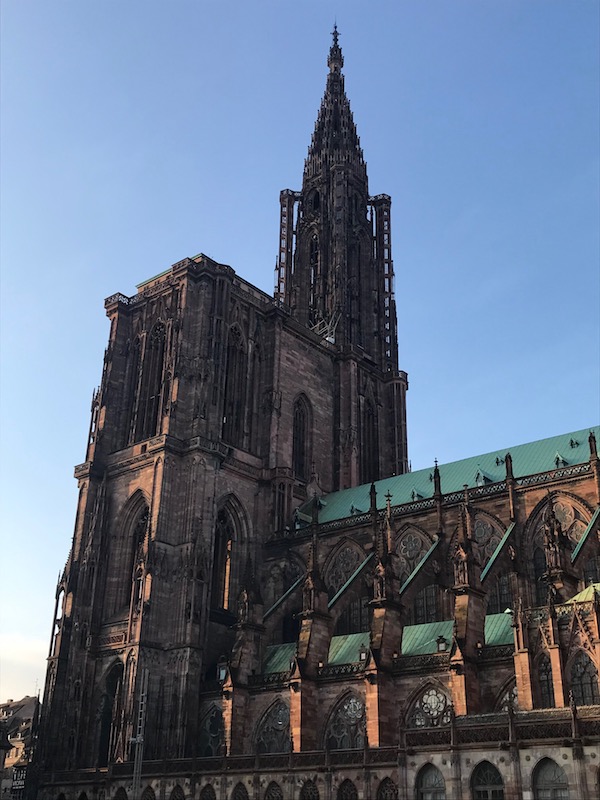
It is so close to the rest of the buildings that it is a bit difficult to get a good picture. But standing in front of the building, you get a sense of just how big it is, along with how ornate it is.
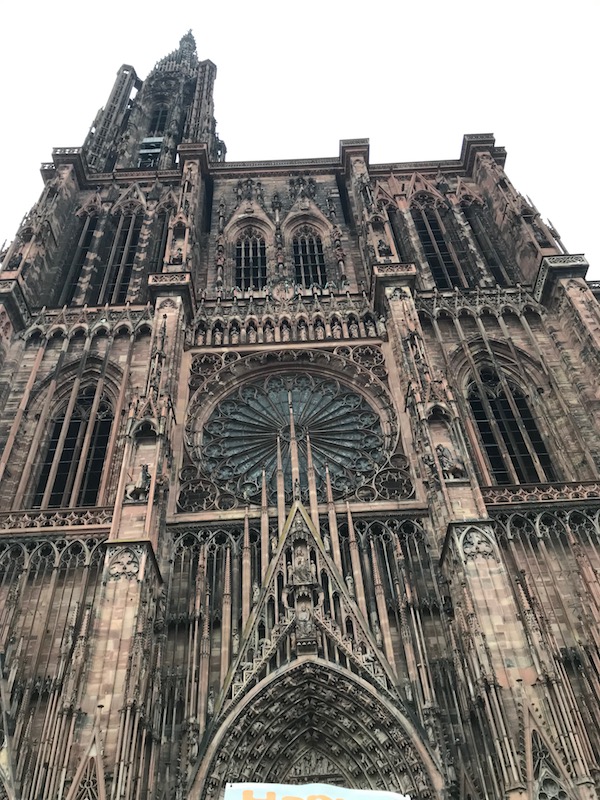
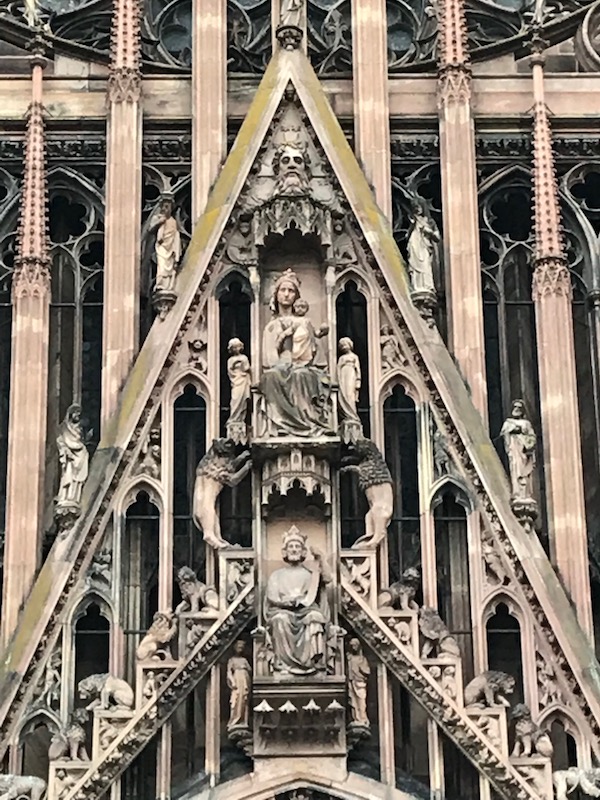
There are several doors, and I wanted to try to get a bunch of pictures to show how beautiful the statues and carvings were. The decoration on the exterior of the building is basically the bible, with all of the various scenes depicted.

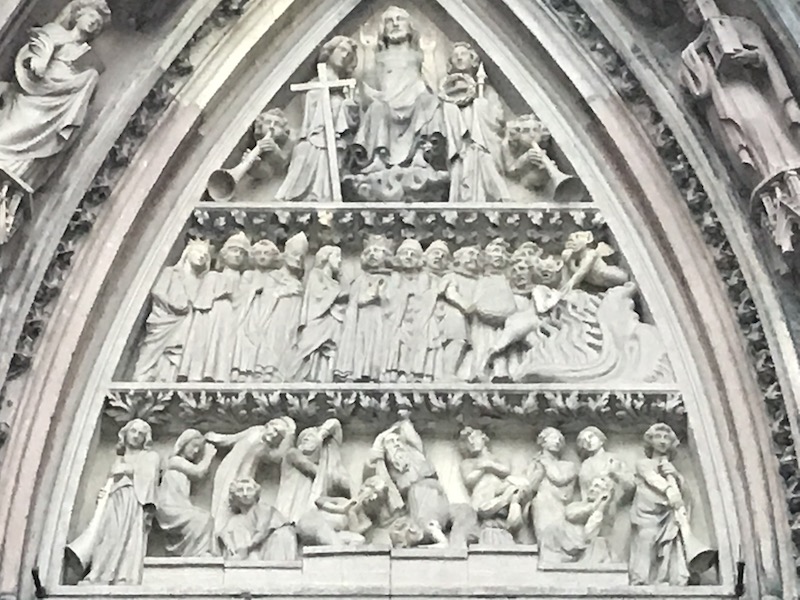






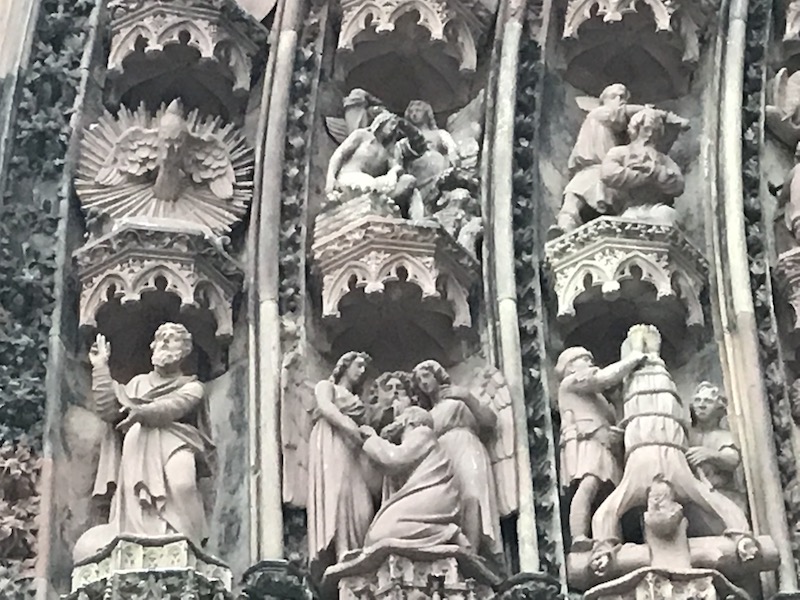
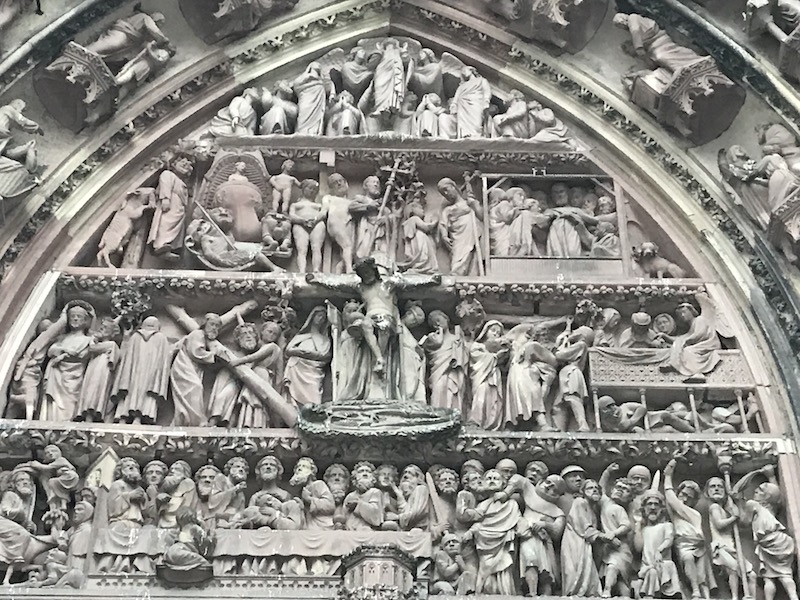
The interior itself isn't highly decorated, but you can see the Gothic architecture all around.

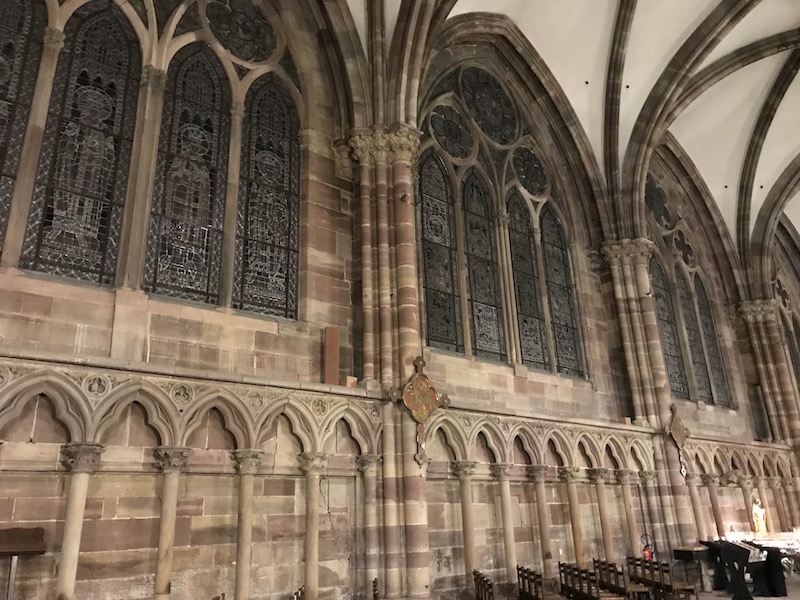

The tapestries that were hanging in the nave are supposedly shown only during Easter and Christmas holidays. They date from the 17th century and depict scenes in the life of Mary.




The organ is suspended over the nave and rests in a highly decorated and colorful cabinet.
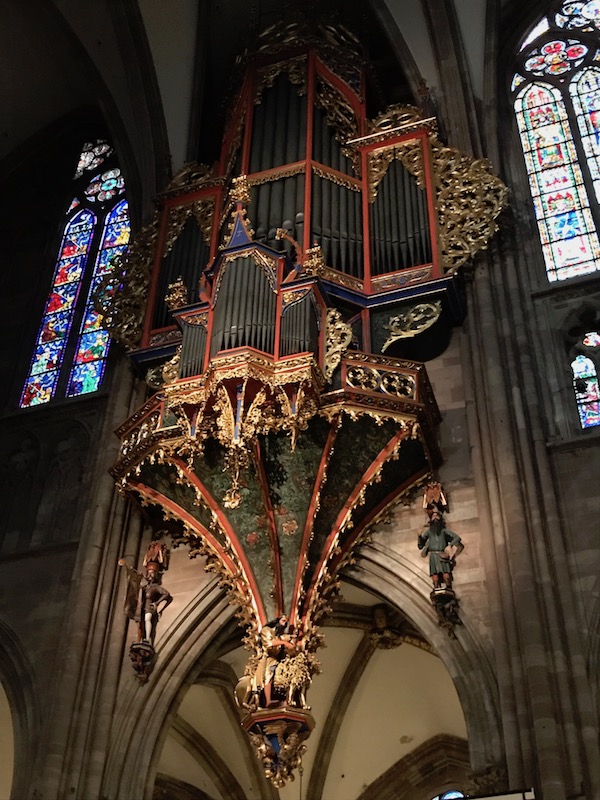


The richly ornate pulpit was carved in 1486.

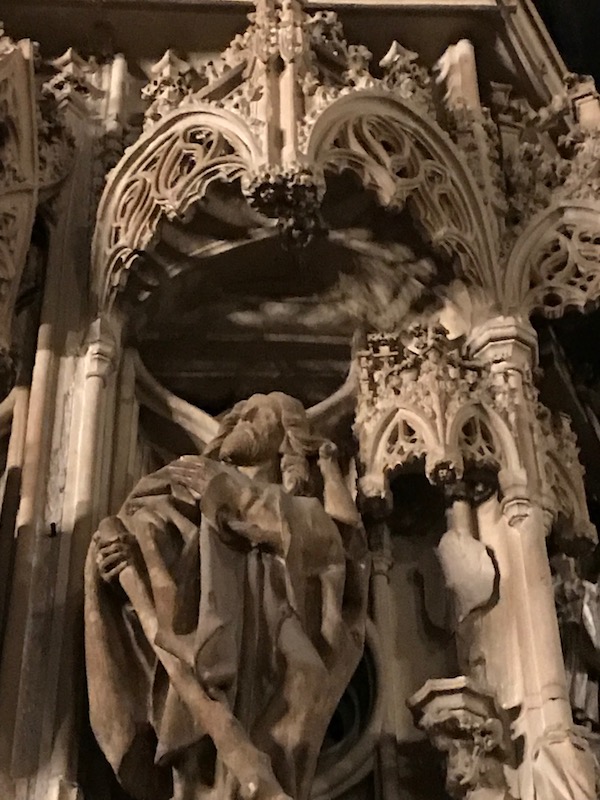
For Christmas, they had various scenes as well including (in order shown): the Annunciation, the Visitation, the nativity scene (multiple pictures), the visit of the Magi (multiple pictures), the presentation,


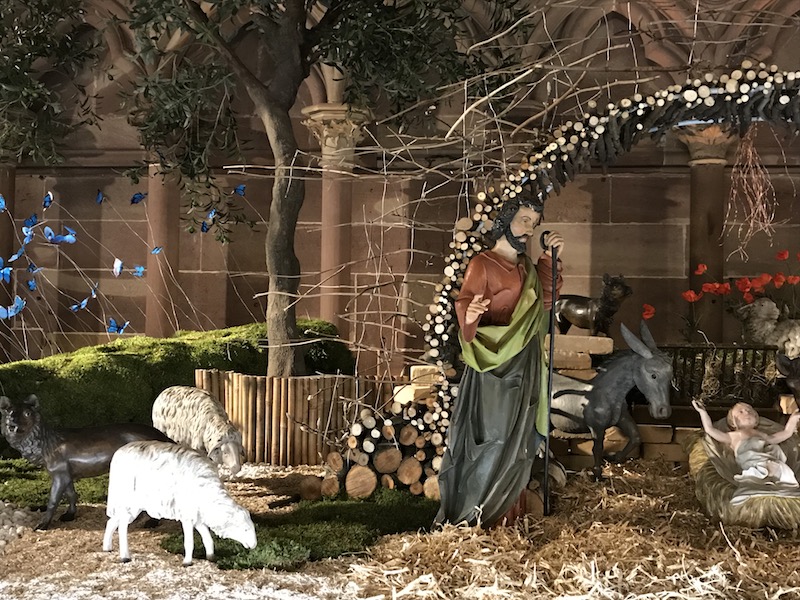

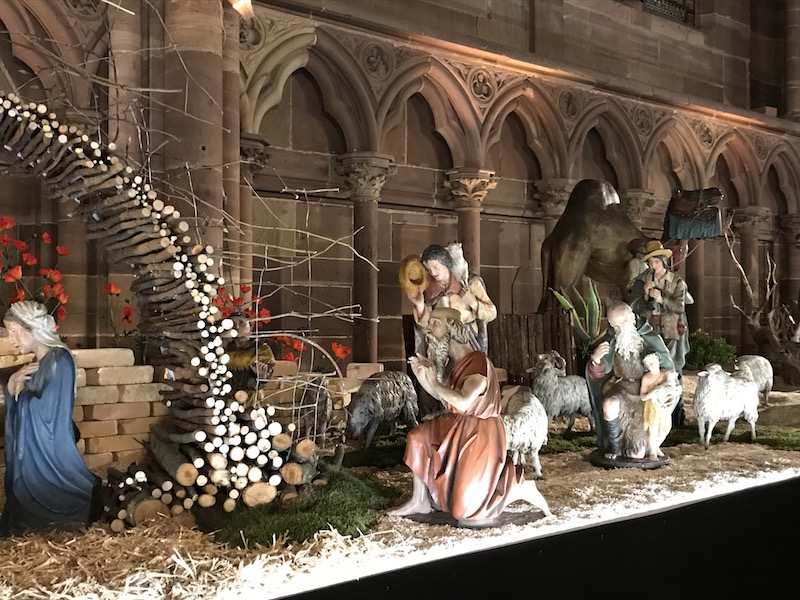


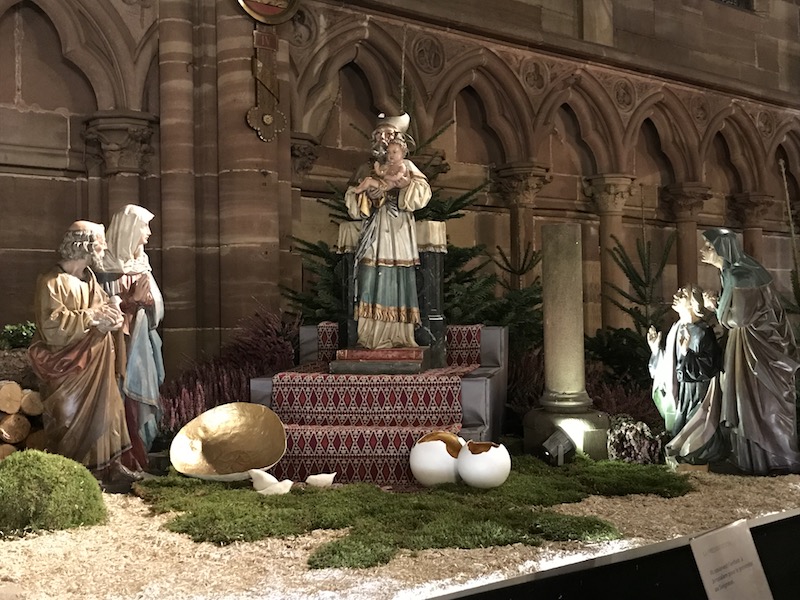
The stained glass windows date mostly from the 12th, 13th, and 14th centuries. Probably the most famous is the Emperor Windows (2nd picture) which is a set of 5 windows that depict the 19 emperors from the Holy Roman Empire. These are some of the oldest windows in the Cathedral. The one I show, circa circa 1210–1270, shows Philip of Swabia, two figures named Henry, and Frederick I.

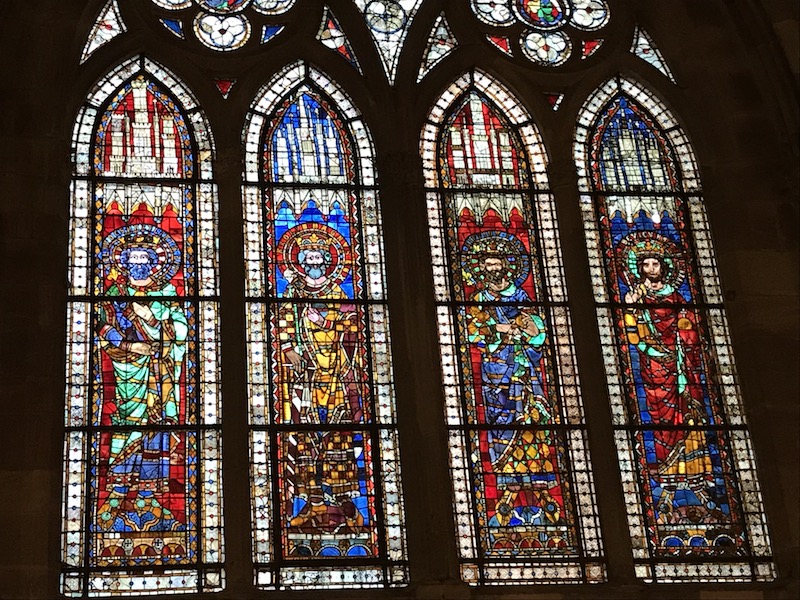
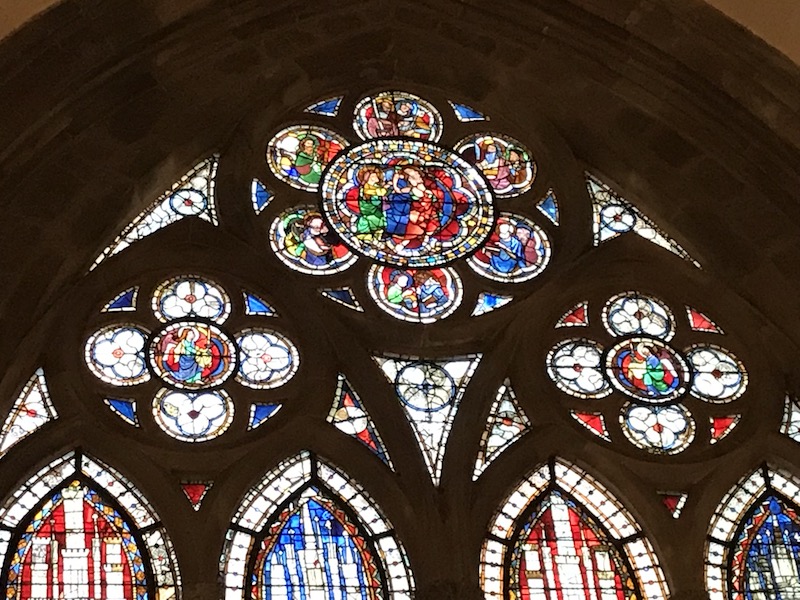
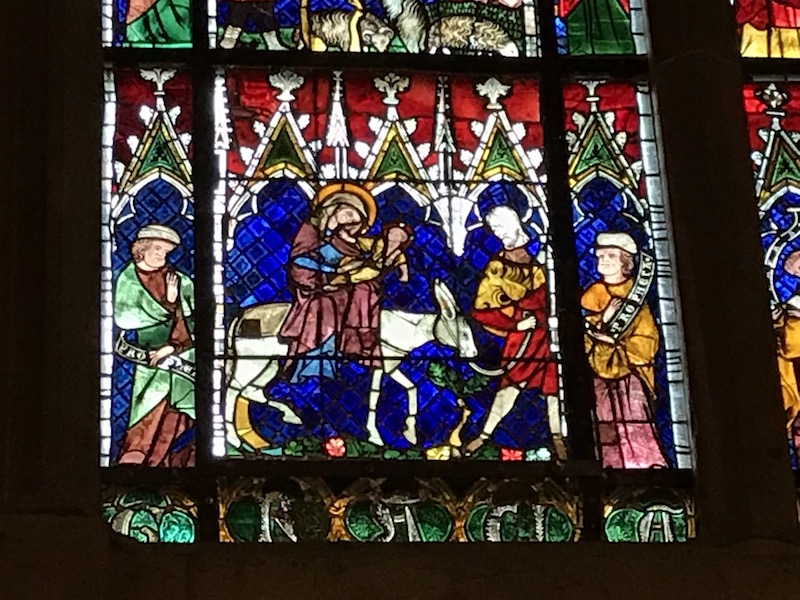

One of the big draws is the Astronomical Clock, although I don't really want to show many pictures that I took of it, since it was almost fully covered with scaffolding as they were doing work on it (WHY would they do this during the Christmas holidays??). It is one of the largest astronomical clocks in the world. You can stand in line (and pay for a ticket) to see it in action although we didn't bother.
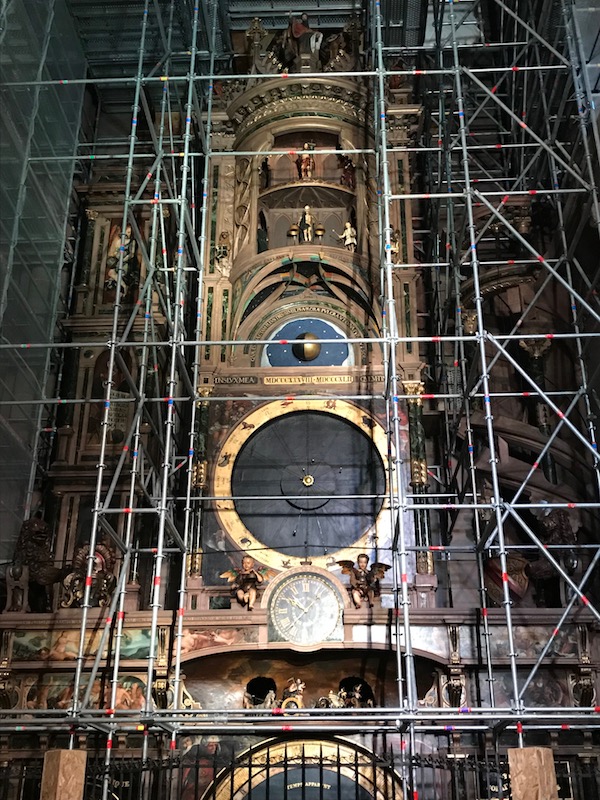



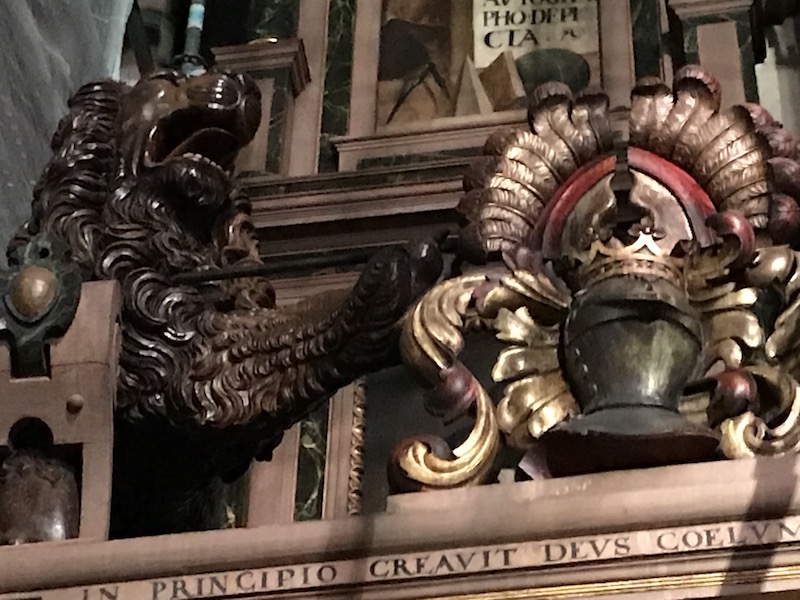
In the center of Place Gutenberg stands the statue of the German printer Johannes Gutenberg, holding a parchment with the words "Et la lumière fut", or "And the light was". Each year, there is a guest country at the market, and this year it was Finland. They had a chalet that was smoking slabs of salmon that you could then buy.


The Barrage Vauban, or Vauban Dam, was built from 1686-1690 of pink Vosges sandstone. It has 13 arches and is 390 ft long. In the event of an attack, the citizens could raise the level of the River Ill and flood the lands south of the city, making them impassable to the enemy. We ended up going by at night, so we got a great view with the lights.

SNOW! We woke up Sunday morning to about 2 inches of snow on the city ... a perfect end to our Christmas Market vacation. We took some pictures from the bridge that was right at our room, looking down the river and of the chalets (closed as it was early) just behind the Palais Rohan. We caught 3 dogs playing in the open square on one side of the cathedral, enjoying the snow as well.





